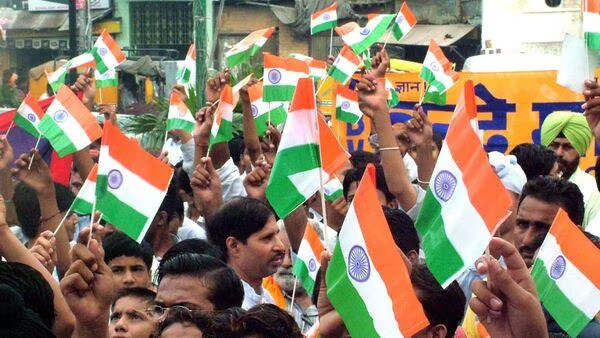
In the recent past, our teams were doing a field visit to Narsan, a village in the Haridwar district of Uttarakhand. Generally, when we meet communities, the first question we ask is how easy do you think is accessing social protection? This time when we asked this, the answer wasn’t binary. It was a glimpse of what Bharat is demanding from its administration — “What is the use of the Aadhaar card linked to our mobile phones? Why can’t we get a notification on the phone when we are eligible for a new scheme?”
The question is extremely basic; but points to a larger systemic challenges India faces today. The last decade has witnessed transformational changes in the social protection system of the country; 32.4 crore of the lowest income earning individuals today have been covered with free health insurance under the Ayushman Bharat scheme and over 8 crore LPG gas connections have been distributed across the country under the Ujjwala Yojana.
Digital infrastructure has become mainstream in the scheme delivery architecture and welfare is now customized to cater to specific trades, while focusing on formalization. However, as India now moves towards 100, this isn’t enough. With a population of about 1.6 billion in 2047 with at least half of Indians in urban areas, the social welfare system will need a relook.
Large enrollment numbers have resulted in demands towards post-linkage support for grievances and with the advent of digital IDs and documentation, their effective usage and relevance in application processes is being questioned. While digital public infrastructure can partially solve many of these challenges, the dynamic socio-economic landscape in the country begs for more transparency, support and ease.
To put things in perspective, let’s consider who is Bharat? In their Indus Valley Annual Report 2024, Blume Ventures highlights the segregation of India, based on Kishore Biyani’s idea of India. India has three major classifications: India 1(~30M households with per capita income of USD 15K) , India 2 (~70M households with per capita income of USD 3K), and India 3 (~205M households with per capita income of USD 1K.)
Today, welfare schemes are largely designed for India 3 although India 2 is also eligible. In fact, for the urban poor, who form a substantial part of India 2, the need for welfare support is much higher.
We would like to highlight three core aspects which need attention as we move towards 100.
Schemes Discovery
Like the community in Uttarakhand, many others do not know about eligible schemes or even their existence! If you look at services targeted at India 1 today, and take an example for a home loan, you will agree that the ‘push’ from service providers is off the charts, sometimes disregarding the privacy of potential customers. But this doesn’t happen for schemes. Hence, how can we enable a digital public good (DPG) or a digital public infrastructure (DPI) strategy to solve this at scale? Solutions need to enable local language scheme discovery, and availability of accurate and updated information, to begin with. Post that building a system which makes eligibility confirmation easy or even pre-approved, like a loan product will pave the way for support services for applications and enrollment.
Customer Support
At present, end users welfare schemes in India are classified as ‘beneficiaries’ often ignoring the need for post-linkage services. We need to start considering these individuals as customers rather than beneficiaries to offer them post-enrollment support, specifically in schemes like insurance. While the Ayushman Bharat covers over 32 crore Indians, the claims rate is not this high. One of the reasons for this can be attributed to the gap in financial and digital literacy. The mindset shift from beneficiaries of the state to stakeholders and customers can help ensure that we build products and services which solve these problems and ensure larger financial inclusion and equity.
A seat on the table for citizens
Many schemes and policies are designed in line with political manifestos. Very little is heard from the end user’s needs and demands, especially when it comes to process. For instance, during one interaction with a community living in Dharavi, Mumbai, one individual who was a migrant said, “Why can’t we have one single identity card which we can use everywhere—at my hometown, at the place of work? Why do we need different documents for applying to different schemes?” Such feedback loops need to be institutionalized so that policymakers can relook at the process and there’s greater civic participation leading to active citizenship. All said, apart from technology, the most important aspect to scale and solve for social protection for all when India is at 100, is the collaboration of multiple stakeholders. For instance, for the distribution and delivery of these schemes, if we think of a viable financial model which promotes village-level entrepreneurs to adopt it will ensure more innovation. This will also mean a perfect synergy between markets and governments to solve for the end users and re-affirm the collaboration of Samaaj, Sarkar and Bazaar to solve at scale.
Aniket Doegar, CEO and Co-founder , v Madhura Karnik, Chief Growth Officer at Haqdarshak